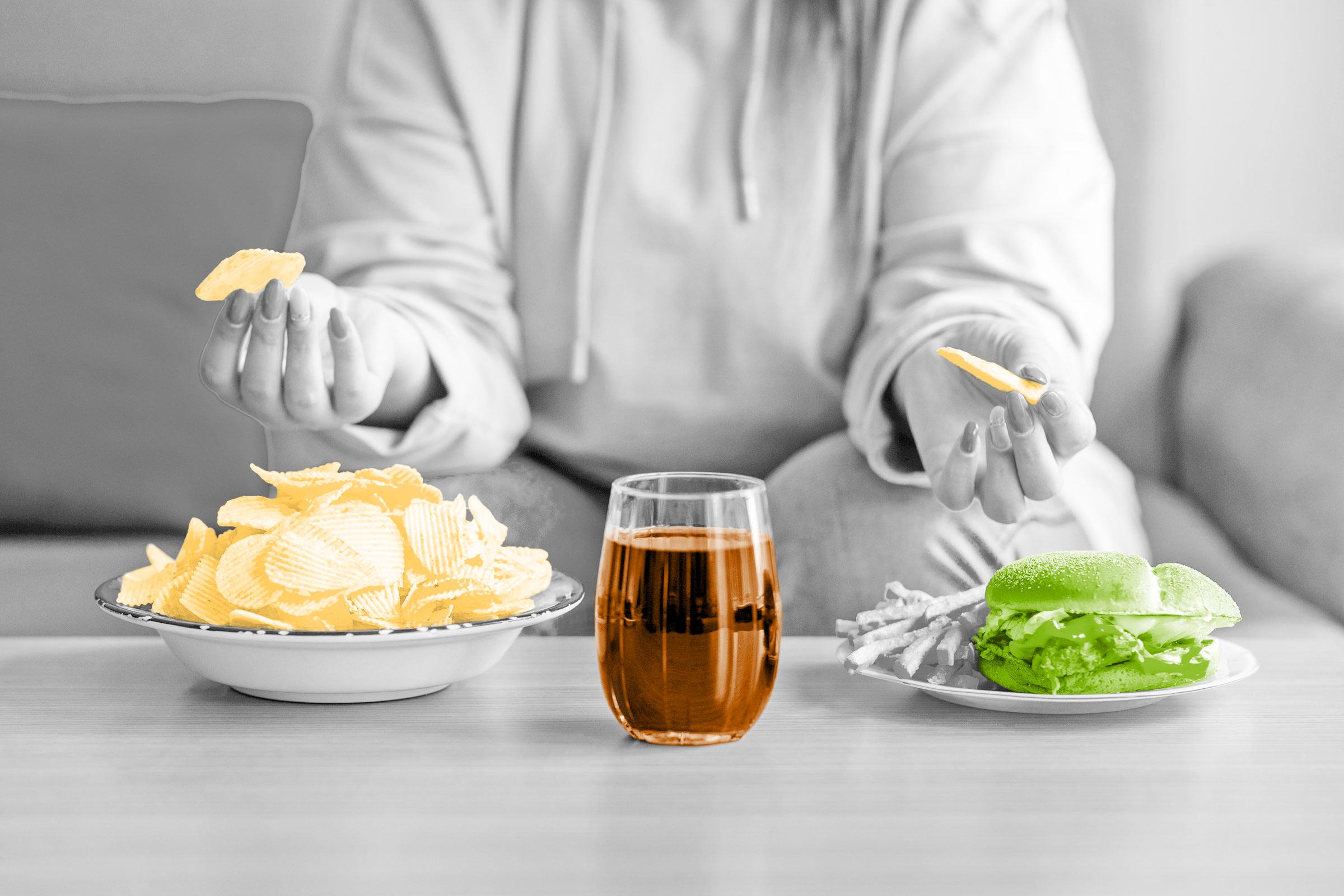

It’s hard to resist the call of break room doughnuts, or the allure of a leisurely stroll down the grocery store snack food aisle. While it may not have much nutritional value, sometimes a good helping of a crispy, crunchy, sweet, salty, or sour snack is just what we need to remedy a bad mood or a tough day. Grab a snack and unwrap these eight facts about popular junk foods.
Doughnuts Cook Better Because of Their Holes

Ever wondered why doughnuts have holes? Historians aren't certain why (or when) the doughy centers disappeared, but one theory suggests it may have been to help the pastries cook more evenly. According to food lore, American sailor Hansen Gregory created the doughnut’s modern shape around 1847 while at sea; by his account, doughnuts of the time were twisted or diamond-shaped and often cooked faster on the outsides than in the centers. Removing the dense middles helped create uniformly cooked treats that fried quickly and didn’t absorb as much oil.
Twinkies Got Their Name From a Shoe Advertisement

The spongy, cream-filled cakes we call Twinkies were first created in 1930 in an attempt to put unused bakery pans back into production. Creator James Dewar was a manager at the Continental Baking Company outside Chicago, where he noticed the factory’s strawberry shortcake-making equipment sat idle once strawberry season ended. Dewar used the pans to bake small cakes injected with cream fillings, naming his invention Twinkies after seeing a billboard for Twinkle Toe Shoes.
7-Eleven and Coca-Cola Teamed Up To Create the Big Gulp

Supersized drinks are just one of the junk food finds you can pick up at 7-Eleven, thanks to a partnership between the convenience store chain and soda manufacturer Coca-Cola. Representatives from the beverage brand approached 7-Eleven leadership in 1976 about upgrading cup sizes from 20 ounces to 32 ounces; after successful market testing at locations in Southern California, 7-Eleven rolled out its larger cups nationally in 1980. However, supersizing drinks didn’t stop there — 7-Eleven rolled out its 44-ounce Super Gulp six years later, and launched the 64-ounce Double Gulp in 1989.
Potato Chips Were Nearly Discontinued During World War II

In the midst of World War II, the U.S. War Production Board was tasked with making the most of limited materials for the war effort, pausing manufacturing of noncritical foods and items. One of the items on the chopping block: potato chips. The snack was initially considered “nonessential,” a move that would stop factories from producing potato chips until the war ended. However, chip manufacturers lobbied to rescind the ruling and even secured contracts to produce chips for troops overseas and workers in manufacturing plants. One such company — Albany, New York’s Blue Ribbon potato chip brand — chipped in about 7 million pounds of crisps to the war effort in just nine months.
A Slurpee Straw Was Featured at MOMA

Spoon straws make it easier to gulp down frosty drinks, but usually get little thought once the Slurpee is done. That’s exactly why the Museum of Modern Art keeps one in its collection. In 2004, a single spoon straw was featured as part of the museum’s “Humble Masterpieces” exhibit, which highlighted around 120 simple, everyday items. The spoon straw’s inventor — engineer Arthur Aykanian — held more than 40 patents, some straw-related, and others not so much, like medical tools used in skin cancer treatment.
Pop-Tarts Originally Had a Different Name

The first toaster pastries — called Country Squares — hit grocery store shelves in 1963, created by Post Cereals. Kellogg Company released its own version six months later, called the Fruit Scone. After further workshopping, Kellogg changed the name to Pop-Tarts (a play on the Pop Art movement of the 1950s and ’60s), and produced the treats in four flavors: strawberry, blueberry, apple-currant, and brown sugar cinnamon. However, the iconic hard icing didn’t top the toaster treats until 1967, four years after the snacks debuted.
Eating Junk Food Rewires Our Brains

There’s a reason ordering your favorite fast-food snack or indulging in a candy bar feels good. It all has to do with dopamine, the “feel-good” hormone inside our brains that influences our moods, behaviors, and motivation. Eating junk food — especially items packed with sugar — triggers the brain’s reward system to release large amounts of dopamine, which makes us feel happy. Over time, our brains adapt to these dopamine rushes, causing junk food cravings and even growing more dopamine receptors that require larger amounts of junk food to have the same satisfying feeling.
You Can Celebrate National Junk Food Day Each Summer

Hot dogs aren’t the only food with their own day of celebration in July — the ever-expanding junk food category is honored in the same month. National Junk Food Day lands on July 21, giving you the chance to celebrate by indulging in all your favorite sweet and savory treats.
